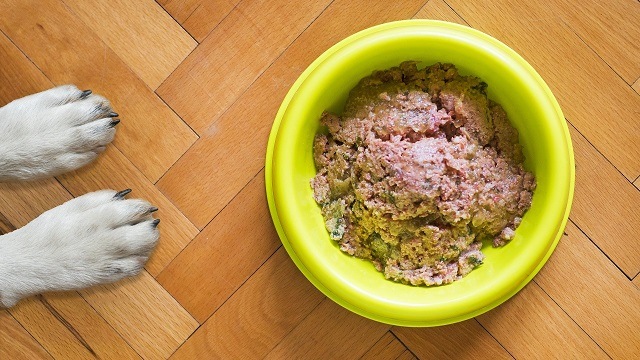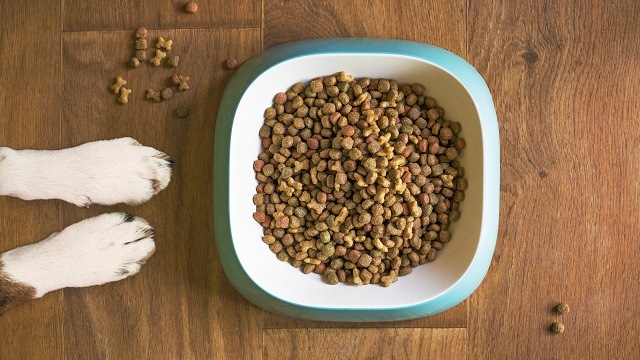What Lies Behind a Pet Food Label
Having a clear understanding of what is inside a pet food bag can be quite a challenge. Even though there are plenty of laws that make sure all the information is given on the pet food label, we do have to learn what it all means in order to make the most appropriate purchase. The question does not lie on whether the true facts are being hidden… But rather how to read in-between the lines. And guess what? It’s all there!
It’s important to highlight that each country – and even states from the same country – may have different policies and legislation. This means the extent of details given by brands commercialized in Europe and in the USA can vary. In this article, we will consider the American policy.
- Understanding pet food labels is crucial, as manufacturers use appealing names that may obscure ingredient quality and quantity.
- Terms like "complete" or "balanced" indicate nutritional adequacy, while "premium" labels do not guarantee higher quality.
- Ingredient listings are based on weight, and moisture content affects comparisons, making it important to read labels thoroughly.
The mysteries of product names

Manufacturers are always trying to label their unique product with the fanciest and most appealing name to catch the consumer’s eye! Fortunately enough, there are some rules that must be followed.
- Rule 1: Look for simple names like “Beef for Dogs” or “Tuna Cat Food”, to ensure it comprises at least 95% of the labelled ingredient. This value does not include water and condiments. Still, when assessed all together, the main ingredient cannot be less than 70%. If the pet food label has two named ingredients like “Lobster and Salmon for Cats”, the sum of the parts must reach the previously mentioned percentages, and the component that comes first is the predominant one.
- Rule 2: if the main ingredients comprise an amount between 25%-95%, the name must include a qualifying descriptive term, such as “Dinner”, “Platter,” “Entree,” “Nuggets” or “Formula” . Usually the primary ingredient is not the one on the name so it’s a wise idea to check the ingredient list. As odd as it may be, a “Chicken Formula Cat Food” can have more fish than chicken!
- Rule 3: pay attention to the word “with”! It means that a food has to have at least 3% of the mentioned component. A “Dog Food With Beef” is only required to have a dishonourable 3% of beef.
- Rule 4: there is no established percentage required for flavours. Normally they are linked to one ingredient, like beef, but more often than not it is another substance that will give that zest your buddy loves. Artificial flavours are rarely used in pet foods with the exception of smoked or bacon ones.
Ingredient list: how extensive!

Luckily for us all, the ingredients must be listed in order of predominance by weight, which includes their inherent water. So comparing the relative quantity of each component may be a tricky job, as they all have different moisture contents.
And is “meat” really meat? By definition it must refer to the clean flesh of slaughtered mammals and is limited to the striated muscle. But (there’s always a “but”…) it can include the overlying fat and the portions of the skin, sinew, nerve and blood vessels that normally accompany the flesh. On the other hand, a“meat meal” is the rendered product from mammal tissues, excluding any added blood, hair, horn, hide trimmings, manure, stomach and rumen contents.
Further down the list, the majority of ingredients with chemical-sounding names are, in fact, vitamins, minerals, or other nutrients.
Wet food and its water boundaries

Canned food typically contains 75-78% moisture, and that is the maximum allowed by law. Still there are some “ifs” that an untrained eye won’t easily detect. Labels like “stew”, “in sauce” or “in gravy” have an extra amount of water, which can rise up to 87,5%, giving the food its texture and fluidity. Of course these are the most appealing ones to our best friends!
It seems rather a tangential difference but in what it concerns the percentage of dry matter it is quite contrasting… With the 75% moisturized food having higher dry matter concentration, and therefore, being usually better.
And what about the nutritional claims?

With the increasing number of labels related to the nutritional adequacy of a pet diet, like “complete”, “balanced” or “100% nutritious”, came the need for setting an official nutritional adequacy statement. And so, the “complete and balanced” label was born. Keep your eyes wide open for this claim! It assures that the product provides a complete and balanced nutrition for your beloved pet!
Be aware that a product that does not meet the nutritional adequacy mentioned above must state that “this product is intended for intermittent or supplemental feeding only”. However, this does not apply to the following ones: “snack”, “treat” or “supplement”.
Understanding other catchy words

Are you not overwhelmed enough? No worries! Read on and we will take care of it.
“Premium”, “super premium”, “ultra premium” and “gourmet” are such appealing words for those concerned with high quality products. Spoiler alert: they are not required to contain any different or higher quality ingredients. Nor a higher nutritional value than any other complete and balanced product.
In what concerns a “Natural” food, it really only has to exclude additional flavours, colour additives or artificial preservatives. On the other hand, “Organic” does relate to the conditions under which the plants were grown or animals were raised. However, there is still a gap in legislation in this field.
Conclusion

Who knew a pet food label could hide so much? As mind-blowing as it can be, facing the tricks used by pet food manufacturers and marketing industries ought to lead to an increasing urge to learn the true meaning behind each word. Seek information, arm yourself with knowledge and avoid being fooled to guarantee your pet’s well-being!
Maven is all about proactive pet care. Be your best friend’s best friend by giving them 24/7, high-quality, industry-leading vet care to improve their mental health, physical health and more. No more frantic googling or unneeded stressful visits to the vet – Maven helps you save hundreds while also ensuring your pet lives the best life possible. Get your kit now!




